Quad Exhaust Tips
Designer: Waikkonen
Project Time: 20+ hours
Project Complexity: Amateur
Project Cost: $100-$500
Driver Selection
Dayton Audio RS100-4 4″ Reference Full-Range Driver Vifa BC25SC06-04 1″ Textile Dome Tweeter 5 kHz High Pass 4 Ohm Crossover
Enclosure Design
Searched eBay for stainless steel exhaust muffler tips with dimensions that would fit the selected drivers, crossovers, and terminal cups. They turned out to be just right for the look I wanted. To up the bling factor I picked flared burn tips, added aluminum air intake funnels, locking rings, and stainless steel cable ties. All binding posts are gold-plated. The woofer and tweeter tubes are held together using a single strip of strong 3M tape which prevented lateral roll and then fastened securely with steel cable. Small rubber feet stabilized the woofer tubes allowing them to stand upright and also decouple the speakers from the surface.
Amplifier/Crossover Configuration
The speakers are powered by two Topping TP20-MK2 TA2020 Class T Digital Mini Amplifiers in a bi-amp configuration with one amp for woofers and one for tweeters. This gives me the flexibility to mix in the amount of tweeter effect I want when listening to different audio sources. The 4″ Dayton RS100-4 is full-range and punches out decent bass for its small size, but crossing over to the Vifa tweeters just adds a nice sparkle at the top end.
Enclosure Assembly
In order to prevent excessive vibration and resonance, one crucial aspect during assembly was that the drivers must not come into contact with the metal enclosures. The drivers and terminal cups are isolated from the enclosures using several layers of gasketing tape, which also did a fine job of holding them firmly in place within the enclosures as no screws were used. The woofer tubes are stuffed with acousta-stuf polyfill for absorption and dampening to enhance bass and midrange. The small high pass crossovers are carefully wrapped in a thin layer of soft foam and then placed inside the tweeter tubes and secured with 3M tape. All internal speaker wiring is done using solderless terminal connectors.
Conclusion
Pretty satisfied overall with the looks, and the sound quality certainly exceeded my expectations. The clarity and imaging of the sound stage is surprising coming from such a tiny system with minimal components and basic construction. It’s no audiophile system for sure but I’ve heard bigger bookshelf speakers that cost more and sound less. The steel enclosures do have a natural brightness to them which I guess helps to bring out the highs without being harsh on the ears. Maybe that’s why they make tweeter domes with titanium and aluminum, who knows.
About The Designer
Beginner. Amateur. Newbie. First-timer. Hope to do another speaker project soon. Apologies for not having any detailed drawings or schematics or work-in-progress pictures. It was all in my head and I sort of made decisions as I went. Thanks for viewing and I hope you enjoy it as much as I did building it.

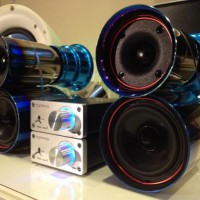
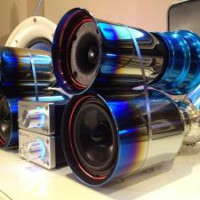
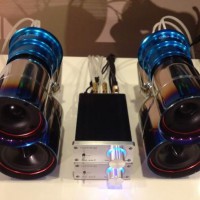

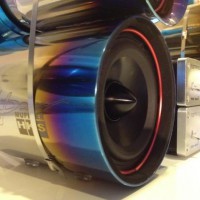
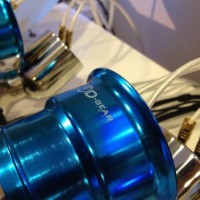
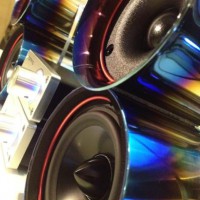
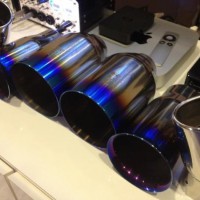
+ There are no comments
Add yours